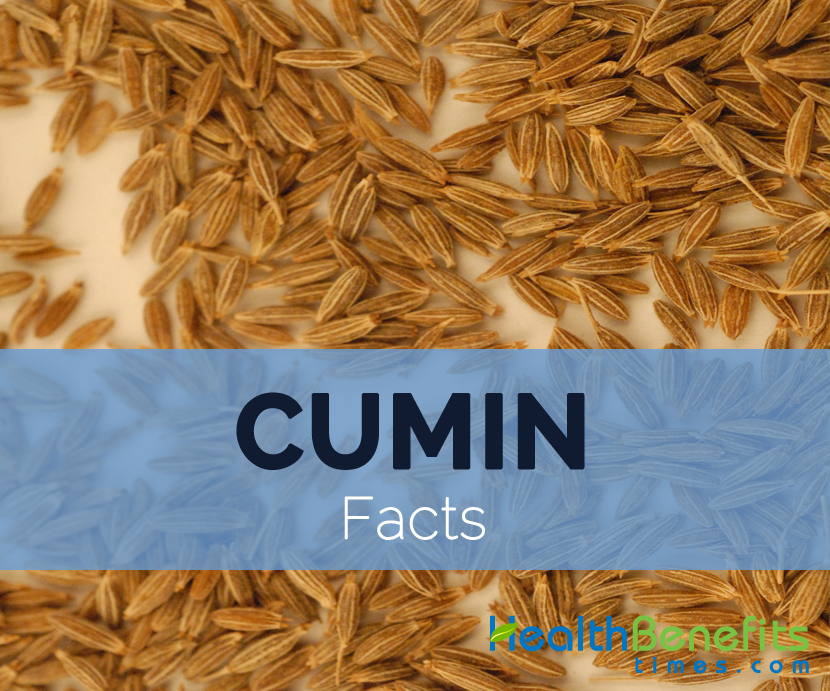
| Name | Cumin |
|---|---|
| Scientific Name | Cuminum cyminum L. |
| Native | East Mediterranean to India, The primary cultivation of cumin is in Europe, Asia, the Middle East, and North Africa with India and Iran as the largest cumin producers and exporters. |
| Common/English Name | Cumin, Cummin, Roman Caraway |
| Name in Other Languages | Arabic : Al-Kamuwn, Kamun; Brazil : Cominho; Bulgarian : Kimion, Kimion; Burmese : Ziya; Chinese : Ou Shi Luo, Ma Ch’in, Xian; Croatian : Kumin; Czech : Šabrej Kmínovitý, Římský Kmín; Danish : Kloeftsvoeb, Spidskommen; Dutch : Komijn; Eastonian: Vürtsköömen, Juustuköömen; Ethiopia : Kemun; Finnish : Juustokumina, Maustekumina; French : Cumin, Cumin Blanc; German : Kreuzkümmel, Weißer Kreuzkümmel; Greek : Kiminon, Kimino; Hebrew : Camon, Kammon; Hungarian : Egyiptomi, Kuminmag; Icelandic: Kummin, Ostakúmen; India :- Bengali : Jira, Guerati : Jiru, Hindu : Jeera, Ziira, Kannada : Jeerige, Malayalam : Jeerakam, Marathi : Jire, Punjabi : Jiira, Sanskrit : Jiraka, Jirna, , Tamil : Jirakam, Seeragam, Telugu : Jilakarra , Jiraka, Urdu : Jirah, Ziraa; Iran : Zirah, Zeera,; Italian : Comino, Cumino; Indonesia : Jintan Bodas , Jintan Putih,; Japanese : Kumin, Hime Unikyoo; Khmer : Ma Chin; Laotian : Thien Khaw; Malaysia : Jintan Putih; Nepalese: Jiiraa, Jira; Newari: Jii Norwegian : Spisskummen, Spisskarve; Pakistan : Zeera; Persian : Zireh, Zire Polish : Kmin, Kminek; Portuguese : Cominho; Russian: Kmin, Kmin Tminovyi; Sri Lanka: Duru, Suduru, Sinhala : Maduru; Slovašcina : Kumin, Laški Kumin; Slovenia : Rasca Rímska, Džíra,; Spanish : Comino Blanco, Comino; Swahili : Jamda, Kisibiti; Swedish : Pepparkummin, Spiskummin; Thai : Thian Khao, Yee Raa; Turkish : Kimyon; Ukrainian : Kmin, Кмин |
| Plant Growth Habit | An erect, slender herbaceous, subglabrous annual |
| Growing Climate | Mediterranean climate |
| Soil | Fertile and well-drained soil |
| Plant Size | 30–50 cm (12–20 inch) |
| Branchlets | Each branch of the plant possesses 2-3 sub branches |
| Stem | Grey or dark green in color |
| Leaf | Pinnate or bipinnate, length 5-10 cm (2-4 inches) , thread like leaflets |
| Flower | Small, white or pink flowers appear on the umbels; shape: oblong or ovate |
| Seed shape & size | Small, slender, oblong, curved |
| Seed color | Yellow to brown |
| Flavor/aroma | Distinct and strong flavor, warm aroma |
| Seed Taste | Coarse |
| Varieties/Types | White cumin seeds and Black cumin seeds |
| Season | Spring |
| Major Nutritions | Iron, Fe 3.98 mg (49.75%) Manganese, Mn 0.2 mg (8.70%) Copper, Cu 0.052 mg (5.78%) Calcium, Ca 56 mg (5.60%) Magnesium, Mg 22 mg (5.24%) Phosphorus, P 30 mg (4.29%) Total Fat (lipid) 1.34 g (3.83%) Vitamin B1 (Thiamin) 0.038 mg (3.17%) Zinc, Zn 0.29 mg (2.64%) Potassium, K 107 mg (2.28%) Protein 1.07 g (2.14%) Carbohydrate 2.65 g (2.04%) Vitamin B6 (Pyridoxine) 0.026 mg (2.00%) Vitamin B3 (Niacin) 0.275 mg (1.72%) Total dietary Fiber 0.6 g (1.58%) |
| Health Benefits |
|
| Calories in 1 tbsp (6 g.) | 22 Kcal. |
| Traditional uses |
|
| Precautions |
|
| How to Eat |
|
| Other Facts |
|
Comments
comments